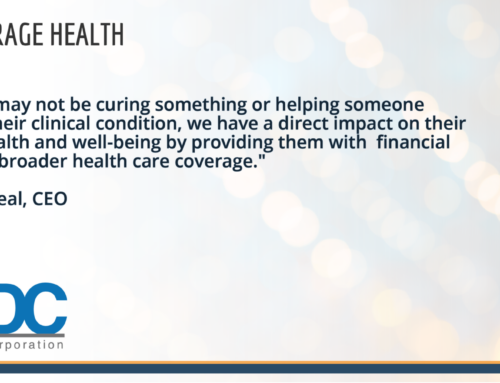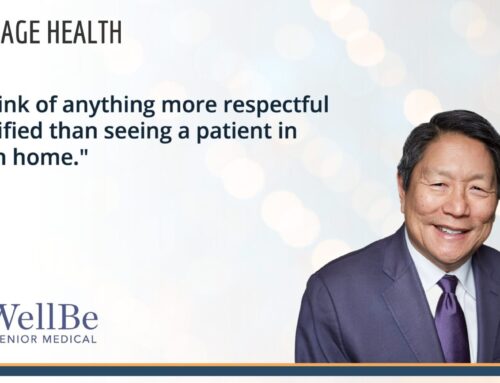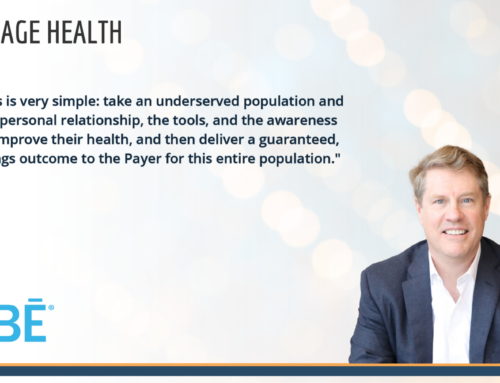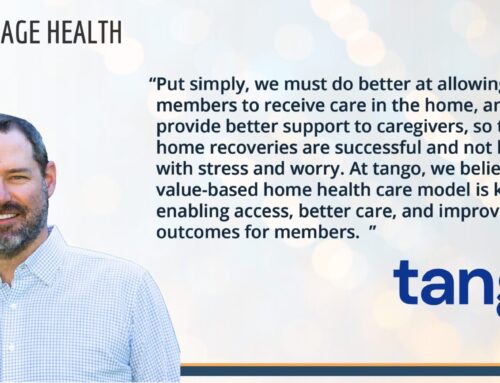Issue 1, January 2018
Welcome to this inaugural issue of “Leverage Insights”,” a uniquely insightful and actionable view into the healthcare marketplace. We are proud and grateful to share the experiences and knowledge of the industry leaders participating in this long-awaited publication. Our relationships with these experts has long been a critical asset to our organization and now we bring that expertise to you.
Leverage Insights will have two sections in each issue
- “Industry Intel” – Providing relevant information from active industry executives on key operational issues which drive our industry
- “Market Influencers” – Highlighting a stimulating topic spoken from business leaders that aims to educate the audience on an important subject
In this issue we’ll discuss Clinical and Financial Dynamics in Closing Care Gaps and Risk Adjustment with executives engaged in carving a new path forward. We’ll also get an expert perspective on Smart Investing in Healthcare. We’re appreciative of the time and insights shared and believe you will find these conversations as engaging and insightful as we did.
Finally, thank you to all those who provided us with guidance on launching Leverage Insights. You know who you are and we are grateful for your support.
— Richard Lungen
Industry Intel
Clinical and Financial Dynamics in Closing Care Gaps and Risk Adjustment
In this interview for Leverage Insights, Richard Lungen and Jimmy Lee from Leverage Health speak with Dr. Richard Snyder, Chief Medical and Chief Clinical Integration Officer at Independence Blue Cross (IBC), and Juan Chaluja, a top executive at Florida Blue, overseeing underwriting and risk adjustment, to offer intelligence and insight from both the clinical as well as financial side of the industry.
Leverage Health: Please introduce yourselves to the readers of Leverage Insights.
Juan Chaluja: For the last five years, I’ve been in charge of developing the risk adjustment capability within Florida Blue (formerly Blue Cross and Blue Shield of Florida) for both the Affordable Care Act book of business as well as Medicare Advantage. I manage the business processes related to risk adjustment for between 1.3 and 1.4 million lives. Trained as a mathematician, I’ve been in the industry for 25 years. I used to run the underwriting department here. Prior to that, I worked in healthcare analytics.
Dr. Snyder: I’ve been with Independence Blue Cross for 20 years. For the last 10, I’ve been the Chief Medical Officer. In this role, I’m responsible for medical and pharmacy cost management, quality management, and all of our care management activities. We’ve been converting to value-based contracts, but in order for the transformation to be effective and the contracts to be successful, we need to move to a model where there’s strong clinical support. That responsibility moved over to me about six months ago, and I’ve been working diligently to get a model approved with state regulators so we can implement it.
Leverage Health: How do you view the relationship of risk adjustment and closing care gaps?
Dr. Snyder: The two are integrally connected. At Independence Blue Cross, we’ve tried to create a system of care where the financial rewards align with accurate coding and reduced care gaps to get physicians to buy in. This happens through physician outreach, but also through a home visit program. To emphasize the importance to physicians and health systems, we’re in the process of moving all of our fee-for-service and pay-for-performance contracts to value-based contracts where the rewards are tied to both accurate comprehensive coding and care gap closure, improving both cost and quality.
We’ve tried to create a system of care where the financial rewards align with accurate coding and reduced care gaps to get physicians to buy in.
To support this, we’ve built a health information exchange that connects providers within the network. We collect more accurate, real-time data at the point of care, and providers get real time information on clinical activity across the ecosystem to help them manage patients’ care and costs.
We analyze the claims data, lab results, and social data we collect using predictive algorithms, identifying members at high risk of using healthcare resources. Then we try to intervene before they get sick. This information gets used in the ACA environment as well as Medicare Advantage. On the clinical side, we use that information to gauge risk and to stratify and target patients for interventions, which helps us in many ways.
Juan Chaluja: Yes, and here’s my non-clinical perspective. Risk adjustment, per se, has only been applied for a dozen years or so, and with the ACA only since 2014. It’s the basis for a good amount of the payments, so at Florida Blue, we’re taking a more comprehensive look at members now than in the past. More than this, we’re looking at patients and care management as well on the revenue side of the equation. We need to report accurately on members’ conditions to help our provider partners care for them, and to get proper revenue from the government. Data and analytics have become more critical.
Data and analytics have become more critical.
Leverage Health: You talk about aligning the incentives with your providers, so that you know the engagement in terms of closing gaps in care, but also coding for code gaps, etc. Are there any other areas you might tweak to optimize risk adjustment?
Dr. Snyder: A couple. We’ve invested in an analytics company to help us give physicians not only the diagnoses that show up in patients’ claims wherever they are incurred, but also present likely future diagnoses for consideration. For example, if you know somebody’s had diabetes for ten years, you know to look for end organ disease, like diabetic retinopathy. If such a patient is not being coded as having end organ disease that may be due to under-reporting—by physicians who didn’t look for the end organ disease or didn’t code properly. Prompting physicians to look for likely conditions, diagnosing where present, and accurately coding improves healthcare.
We’re also optimizing our marketing efforts to recruit people who could generate additional revenue. And we’re researching new narrow-focused and disease-specific products associated with different revenue streams based on the prevalence and geolocation of members with certain conditions. Cooperative healthcare systems are taking downside risk with us, so we can roll these products out soon.
Juan Chaluja: As we talk about the future of risk adjustment in terms of analytics, information, and intelligence, we’re moving towards an analytics model that encompasses traditional risk adjustment and helps with competitive positioning. It’s called Risk Adjusted Economics. We’re asking ourselves what are the characteristics of the different performance score cards? What are the segments of the members we want to appeal to?
We’re moving towards an analytics model that encompasses traditional risk adjustment and helps with competitive positioning.
This is a multiyear project where we drive and inform targeting and retention campaigns and provide all this intelligence, not only for risk adjustment purposes but also to move that information to our product placement area, so we can ask and answer other questions: How do we simplify offerings to increase the product differentiation? How do we offer products with specific benefits? In the end, it’s all geared toward the member. To be competitive we have to price our products strategically. So, this information is critical for more than closing gaps in the commercial space.
Leverage Health: How do you manage all this without fatiguing the member or the provider? How do you aggregate all those functional areas?
Juan Chaluja: Here at Florida Blue, we created a data source we call Integrated Consumer Analytics. It ranks members, merging all the analytics along with risk adjustment. We coordinate all our member and provider campaigns. Ultimately, we want to minimize member abrasion, so we need a high level of coordination. This kind of integrated consumer analytics model takes a lot of collaboration. It helps us set priorities in our campaigns, but it’s not perfect.
Dr. Snyder: We also try to integrate our fourth-quarter efforts to close remaining care gaps and ensure coding accuracy. We send a report to everyone, right down to the physician’s office, paying a significant amount to those physicians who complete a review of codes and close care gaps. If they’re going to call Mrs. Smith in for a visit to close care gaps, they need to look at the codes at the same time and validate diagnoses. Each month, we encourage practices to get in touch with patients with care gaps by providing current lists. We reward members for closing certain care gaps with gift cards and alert them using text messages when they should go to the physician. By the way, the response rate with texting is 30% better than either phone or mail.
Each month, we encourage practices to get in touch with patients with care gaps by providing current lists.
Leverage Health: If someone is reading this from any state operating a less dense health plan, does geography matter? Whether you’re in a statewide plan with millions of lives such as Florida Blue or in a very large population in five counties such as IBC, do the tactics needed to close gaps of care and risk adjustment matter by geography?
Juan Chaluja: Geography matters a lot. If you’re doing in-home assessments, which is a tool to close care gaps in extensive rural areas, of which we have a lot in Florida, versus, say, New York City where many providers might be in one building, it makes a big difference. It depends on the type of value-based contracts you have with providers.
Dr. Snyder: There’s an urban versus suburban/rural phenomenon that’s apparent when you look at things like HEDIS scores. If you look at the plans that are statewide in Pennsylvania, suburban plans have higher scores than urban plans do.
There’s an urban versus suburban/rural phenomenon that’s apparent when you look at things like HEDIS scores.
Leverage Health: I’ve heard Blue Cross Blue Shield plan executives use phrases such as, “no margin, no mission.” As executives of two of the largest Blue Cross Blue Shield plans, how do you balance the necessity to be a financially sound plan against the goal of being a good partner to your provider? How do you as a not-for-profit work through profitability in your marketplace? Or is the word profitable taboo?
Dr. Snyder: First of all, I agree with “no margin, no mission,” and we have a mission to enhance the health and wellbeing of the people and communities we serve. Independence and the Independence Blue Cross Foundation spend considerable dollars on initiatives that improve the quality of care not just for our members but also for the community at large.
Because we have a mission, we need reserves that cover the risk profile of our membership. With our current upside and downside facilitated health networks contracts, there are several elements at play. One: along with lower rates, hospitals must agree to take downside risks. We’ll give them claims data, including allowed and paid amounts for every claim incurred by a patient who’s a downside risk. In return, we demand they regularly give us an extract of the electronic medical record, so we can minimize the admin costs of closing coding gaps—because we can only receive say 11 or 14 CPT codes in a claim, and a patient might have more than that. With the electronic medical record, we can go online and verify diagnoses by providers who are not documenting diagnoses in claims and that certain care gaps have been closed.
Also, each institution with a facilitated health network contract has a joint operating committee co-chaired by myself and their chief medical officer and staffed with business people and analytic experts, including both informatics, actuarial, and clinical people. Without going into detail, the data tells us where the opportunities lie—optimizing prescribing, for example. There’s very little push back when we provide cost transparency information to physicians. They’ll start making better more effective prescription choices, and the savings affect the institution’s bottom line and ours.
There’s very little push back when we provide cost transparency information to physicians.
Our largest single institutional system, the University of Pennsylvania Health system, gets a billion dollars a year in revenue from us. They’re taking downside risk and have given us a 30-day all cause re-admission warranty. So, we’re not obligated to pay for people leaving Penn providers who are re-admitted. Even if a patient leaves the hospital with a heart failure diagnosis, falls and breaks a hip, Independence doesn’t pay for the hip. Quality of care is the magnifier or divider. A provider can earn up to 125% of the share of savings that’s generated by deflecting the cost curve. A 50% share of savings could become 62.5 %, or, if the quality is low, 37.5%. That’s how we’re getting providers to appreciate that lowering the cost of care is important—through reductions in fee for service claim costs. And then, we offer them an opportunity to earn a share of savings when they further bend the cost curve.
Juan Chaluja: In Florida, our mission is to help people and communities throughout Florida achieve better health. So, we’re not just about our members either, but all Floridians. We, too, have vision, but to manifest our vision we need capital and reserves. Operating within our legal requirements, we, too, have profit targets. For everyone to achieve their goals, every business segment has to succeed. I echo what Dr. Snyder said and have very similar approaches to how we negotiate contracts with our providers—and analytics plays a significant role. Still, in the end, we have a higher mission, which goes beyond profits and includes community well being.
We’re not just about our members either, but all Floridians.
Leverage Health: So, do you tend to build this competency around data and analytics in order to successfully execute your plans?
]Juan Chaluja: The internal analytics we’re developing at Florida Blue are extremely critical. We do have partners, but it’s mainly developed in-house. Beyond analytics, the latency of data is more critical than it was before. We need not only great analytics but also to deliver those analytics to our partners in a timely manner.
Dr. Snyder: We also have a very active internal analytics capability supplemented by algorithms that we’ve developed with teams from NYU Langone Medical Center and MIT.
Leverage Health: So, would you say your success in care gap management and risk accuracy leads to better health outcomes and reduced costs?
Dr. Snyder: It’s hard to demonstrate a direct relationship between dollars invested in closing a care gap and either savings or improving outcomes. Measuring how losing care gaps is a little distant from actual outcomes. That said, I believe that as we see improvement in methods, we’ll see a growing reliance on more precision medicine tactics for managing health risk. In recent years, we’ve seen a slight decline in mammography screening rates. And getting some portion of your population to get a mammogram is a challenge. And because the American Cancer Society, the American Board of Obstetrics and Gynecology, the United States Preventive Services Task Force differ in their recommendations, it’s confused the market. Patients aren’t sure about when and how often to get mammograms. But a number of studies underway, including one at U.C. hospitals called the Wisdom Study, will help us—through genetic testing—to more accurately predict who needs to get a mammogram and how often. Educating patients will lead to better outcomes without running everybody through the mill.
I believe that as we see improvement in methods, we’ll see a growing reliance on more precision medicine tactics for managing health risk.
I think a lot of our measures, when we talk about care gap measures, are process measures, not outcome measures. Again, it’s hard to make a direct correlation between closing care gaps and saving money, but, though it’s a blunt instrument, intuitively, I know it’s the right thing to do until we discover a better way. I believe personalized medicine or precision medicine may take us there.
Juan Chaluja: I’d like close with this. I got a letter from a member who was upset with us because we kept bugging him to get a colonoscopy. Well, it turned out our nagging helped save his life. The letter expressed his gratitude. He finally got a colonoscopy, and they treated his colon cancer. That’s the essence of what we’re doing with closing care gaps, right? That’s evidence enough for me to know we’re doing the right thing.
Leverage Health: The personal side and the individual is what matters—that’s a great way to end. Thank you both so much.
Market Influencers
For our inaugural issue of Leverage Insights, Leverage Health’s Richard Lungen and Charlie Falcone spoke with Chris Adams, Deal Maker, at the now legendary Francisco Partners, to give you an insider’s perspective on the thinking at one of the edgiest and most respected firms investing in healthcare today. What follows are Chris’s insights on FP’s ongoing success and on where his firm—and health care investment—might be headed in the future.
Trained as a computer engineer, Chris Adams started his career consulting at Bain & Company. After a few years at a private equity fund, Chris attended business school, and then joined Francisco Partners. That was 10 years ago, and, as Chris puts it, “It’s been a really fun run ever since.”
Leverage Health: Thanks so much for talking with us Chris. Before we dive deep, can you take a minute to bring everyone up to speed on Francisco Partners.
Chris Adams: Sure thing, Richard. FP started almost 20 years ago as an IT firm focused on investing in mid-sized tech and tech-enabled businesses. Following that strategy, the firm’s grown—raising six different funds and nearly 15 billion dollars in capital—and evolved, even since I came on board. For one thing, we now specialize in different parts of the tech ecosystem—delving deep in each area—with healthcare IT now our single biggest area of focus. We’ve bought about 50 healthcare IT businesses across 20 different platform investments.
LH: Congratulations on your sensational growth. One of the things that’s most interesting from our perspective about Francisco Partners is that not only have you taken large investments into established companies, but you’ve also identified opportunities—just like Leverage Health does—and created businesses from the ground floor.
Chris Adams: Most of what we’ve done has been investing in more traditional, mature businesses. What’s led us to start businesses, which we have done now three times and hopefully will do more of in the future, has been three things. The first is the identification of a segment where we liked the macro opportunity behind a certain theme or space, but where we didn’t see a company of scale operating in that space. The second impetus for starting a company is having a management team that sees that same problem and wants to be involved in building and operating a business. At FP, we spend a large portion of our time getting to know folks who will be involved in operating our businesses. Third, we look for opportunities where a business can be built around large anchor relationships. Whether that’s working with health systems, pharmacies, or other larger players in the ecosystem, we want to partner with these large customers in the initial days of an investment to help an earlier stage company reach scale unusually quickly.
LH: We didn’t know you placed so much of a premium on the anchor relationships, but that makes a lot of sense. Can you share more about your process of evaluating companies that want FP as an investor? When you lift up the cover, what are the critical aspects of the prospective portfolio company that are must-haves for your model?
Chris Adams: Our investment model can vary quite a bit, as we spend time with both very high performing companies as well as with companies where not everything is working perfectly. So, it’s more about the attributes that make an investment opportunity unlikely to be a match for us. Most importantly, we’re generally not willing to take technology risk. If a company has new but unproven technology or products that seem broken and need a technology overhaul, we generally shy away from those situations. Another concern for us is regulatory risk. You can’t entirely avoid regulatory risk in healthcare, but we get most excited about businesses whose value proposition isn’t reliant on regulations. We look for companies with an intense focus on delivering a clear and tangible financial, operational, or administrative ROI. Some examples to date are businesses whose software helps health systems recruit, train, staff, and schedule their workforce more efficiently. Another is flavors of businesses that use software to automate processes that were historically manual and inefficient. If you have a clear story about improving efficiencies in the system then you have a strong business regardless of the regulatory backdrop.
LH: As I like to say, private equity firms aspire to be FP. Tell me, do you find the provider side or the payer side more appealing?
Chris Adams: Historically, we started out partnering with founders on the provider side. We’ve invested in companies providing EMR, practice management, financial, and operational software services sold at hospitals. But over the past several years, we’ve gone beyond that, with a good mix of pharma or pharmacy-facing and payer-facing investments.
LH: Which means that with assets like Availity, you cross over all the verticals.
Chris Adams: Exactly. A number of our investments really create convergence across payers and providers. Companies we’ve invested in, like Availity and CoverMyMeds, have built ecosystems connecting payers and providers.
LH: So how do you sort through all the prospective companies that would love to have FP as an investor and decide on an actual investment?
Chris Adams: With focus and flexibility. We have built a really deep team—seven folks dedicated to healthcare IT, numerous operating advisors and executives, and people from past portfolio companies all dedicated to and deeply informed about healthcare IT.
We try hard to stay flexible with our investment capital. It can be easy to box yourself into a small set of potential transactions or companies. But rather than do that, we really look for situations where we can create significant value by helping a company look very different several years down the road. When we see that possibility, we also can be pretty flexible in terms of what the company does and about how we get it there.
LH: We’ve seen that FP has stayed out of the trend to invest in start-up payer space to date vs your Private Equity per group—can you speak to this?
Chris Adams: That’s true. With our DNA as technology investors, we’re drawn more naturally to businesses with a focus on technology or tech-enabled services, rather than pure services oriented businesses like insurance companies. That said, some payer models we’re involved with fall somewhere in between those ends of the spectrum.
LH: Let’s say you’re talking to an aspiring entrepreneur at JP Morgan Healthcare Conference next week, who wants to raise some capital and build a business in healthcare. Your advice?
Chris Adams: My advice would be to pick a narrow problem set and focus on delivering a very specific but great solution. Today, everybody’s talking about population health and big data analytics and transforming clinical care. Too many entrepreneurs try to do too many things. To me, it seems as if there are a lot of better opportunities if you focus on not quite the biggest market, and maybe not on an area that’s getting all the attention but on one where you can still seize a good opportunity.
You can build some great businesses one step removed from what’s being written about on the front page of the paper.
LH: If you had a crystal ball where do you see this industry heading in the next few years, as it relates to FP, and in general?
Chris Adams: Well, healthcare has been growing at an outsized rate for a long time and that’s not changing. Few other segments of the economy are so under-penetrated with technology. And that’s even with the huge amounts of money that have been invested and the value that has been created in healthcare IT over the past decade. We see continued IT penetration into healthcare as a trend that’s going to continue for a long time.
LH: With all the consolidation happening on both the payer and provider sides, how do you see this affecting the industry?
]Chris Adams: Too early to tell. If you look back a couple of years, even more payer consolidation looked likely, and that didn’t happen. We may be at the beginning of another wave right now, but it’s hard to know. In some segments, some incumbents are stable and solid. In others, you see disruptors and businesses in much earlier stages who have cool, innovative solutions but no long-standing customer relationships.
Consolidation could change the equation where some really big companies need to make big IT decisions, and that may provide windows for some innovative companies.
LH: There’s a lot to learn from Francisco Partners—thanks for offering all this, Chris.







Stay In Touch